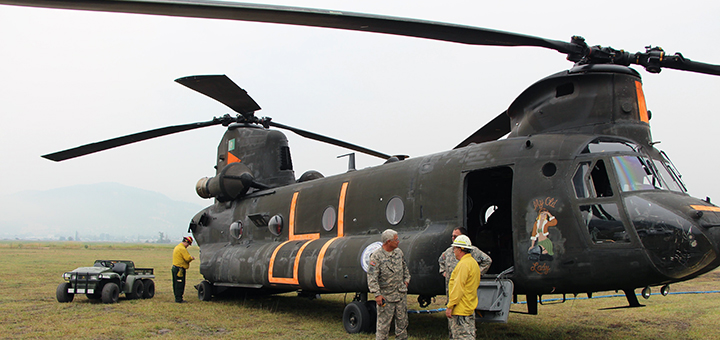Other News Releases
Media Contacts:
U.S. Forest Service: Stanton Florea, [email protected]
152nd Airlift Wing: SMSgt. Paula Macomber, [email protected]
California Air National Guard, Nevada Air National Guard and USDA Forest Service conducting annual aerial firefighting training
Sacramento, Calif., June 12, 2020 – The California Air National Guard’s 146th Airlift Wing and the Nevada National Guard’s 152nd Airlift Wing will join the USDA Forest Service, the Bureau of Land Management and other firefighting agencies for aerial wildland firefighting training June 15-19 at CAL FIRE’s McClellan Reload Base.
“The Modular Airborne Fire Fighting System (MAFFS) program is a tremendous example of how the USDA Forest Service and other wildland fire agencies work cooperatively with the military,” said Kim Christensen, deputy assistant director for operations for the USDA Forest Service. “We conduct an annual training and certification exercise to ensure that MAFFS can be integrated into fire suppression operations in a safe, effective and seamless manner. It helps ensure our mutual preparedness.”
Having military C-130s that can be converted into airtankers provides a critical “surge” capability that can be used to augment wildfire suppression efforts when the commercial airtankers are fully committed or not readily available.
The aircraft will be doing practice water drops in more remote areas of the Tahoe National Forest and Shasta-Trinity National Forest. Residents in those areas may see low-flying C-130 aircraft and U.S. Forest Service lead planes throughout the week. MAFFS aircraft will load water at McClellan and travel to drop zones on each forest for the practice drops.
The 146th Airlift Wing and 152nd Airlift Wing C-130 Hercules aircraft are equipped with the U.S. Forest Service’s MAFFS, which can drop up to 3,000 gallons of fire retardant in less than 10 seconds across a quarter-mile line. The system slides into the back of the military aircraft, and retardant is released through a nozzle on the rear left side. MAFFS aircraft can be activated to supplement the USDA Forest Service and the civilian airtanker program to slow or stop the spread of wildland fires across the nation. The Department of Defense can provide up to eight MAFFS equipped aircraft, as required.
“Training as a team is critical,” said Col. Jacob Hammons, 152nd Airlift Wing Commander. “We’re excited to join up with our civilian and military partners this week and prepare for another challenging wildfire season. When the time comes, we’re able to battle wildfires as one unified team because of this training we do together. It’s quite rewarding as Guardsmen and Reservists supporting our civilian emergency response agencies knowing we help make a difference caring for and protecting our citizens and their property.”
The 153rd Airlift Wing from Cheyenne, Wyo. and the 302nd Airlift Wing, Peterson Air Force Base, Colo., are also providing personnel to the MAFFS training exercise.
The certification training, sponsored by the USDA Forest Service, includes classroom sessions, flying and ground operations for Air Force aircrews, civilian lead plane pilots and support personnel from the USDA Forest Service, Bureau of Land Management and other state and federal firefighting agencies.
For background photos and videos of the MAFFS program, visit: www.dvidshub.net/feature/MAFFSAEG.
###









